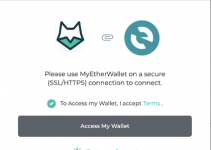It’s probably no surprise when we say that the cryptocurrency markets are extremely volatile. The prices of Bitcoin, Ethereum, XRP, and basically any other crypto are swinging up and down regularly, which might discourage more conservative investors from cryptocurrency trading.
Imagine going for holidays where you don’t have access to the internet, just to come back two weeks later, realizing your crypto holdings are down 15%, 30%, or even 50%. Holding onto volatile assets has its benefits and disadvantages, but there’s nothing sweet in losing your wealth.
This volatility doesn’t only affect the investors, but also online shoppers and e-commerce business owners. When making a payment with a specific cryptocurrency, its price might change before the transaction is confirmed and settled, ultimately resulting in a loss (or profit).
Stablecoins to the Rescue
Cryptocurrency exchanges and businesses needed to address the issue of volatility, and in 2014 the first fiat-backed cryptocurrency was created – Tether (USDT). Since then, multiple exchanges and financial organizations created their own stablecoins, which are now widely popular across the cryptocurrency market. Fiat-backed stablecoins are the most common and most popular type of stablecoins. To protect their stable prices, these coins are pegged on a 1:1 basis to national fiat currencies such as USD, GBP, or JPY.
This means that one million USDT coins should be backed by one million USD fiat currency to preserve its value and avoid volatile swings.
The main benefit of stablecoins is that the price volatility is minimized by the uncorrelated asset used to back the stablecoin, diminishing monetary hazard. Bitcoin price is often tightly correlated to altcoins in USD returns, and if one moves, the other follows. Stablecoins allow you to exit your position in volatile cryptocurrencies without leaving the market or exchanging into a fiat currency.
However, there’s one major disadvantage with this type of stablecoins – the issuer must be trusted. There is no way to determine with confidence whether the issuer holds funds in reserve on the 1:1 basis, or whether they hold any reserves at all. At best, the issuing company can attempt to be as transparent as possible when it comes to publishing audits, but the system is far from trustless.
In other words, stablecoins can serve as a safe haven for crypto investors, assuming that the issuer of the stablecoin follows compliance requirements and responsibly manages the supply,
What are Binance’s BUSD and BGBP Stablecoins?
To provide a safe haven to all Binance users and to allow fast and cheap transactions, we’ve designed our own fiat-backed stablecoins.
The first is BUSD, which is pegged on a 1:1 basis to the U.S. dollar (USD). The second is BGBP, which is pegged on a 1:1 basis to British pound (GBP).
Our BUSD and BGBP stablecoins run on two blockchains: Ethereum as ERC-20 tokens and Binance Chain as BEP-2 tokens. We incorporated them in multiple exchanges such as Binance.com (with trading discounts), Binance US, and other centralized exchanges. They’re tradable on popular non-custodial trading platforms, such as Binance DEX, Curve Finance, and Uniswap.
Both of these stablecoins serve as a medium of exchange that complements cryptocurrencies. They offer a safeguard against volatility and an excellent hedge providing traders with an effective tool to manage risk. Both BUSD and BGBP can also be instantaneously exchanged for a wide range of cryptocurrencies supported on Binance.com.
In addition to fiat-backed stablecoins, there are other stablecoin classes, such as commodity-backed stablecoins, algorithmic stablecoins, and cryptocurrency-backed stablecoins. Want to learn more about different types of stablecoins? Head to Binance Academy to discover more.


